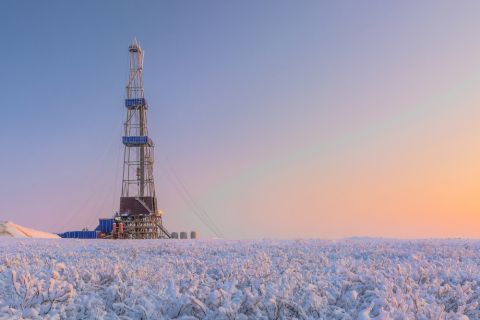- The industry sees a need for well stimulation market data.
- Well stimulation data are incomplete and lagged.
- Currently there’s a well stimulation concentration in the Permian, Eagle Ford and Marcellus.
Ever wonder about well stimulation market share? You’re not alone. There are no official well stimulation spread counts, unlike the drilling sector, where three entities track activity. That made sense in the past. The drilling rig was the primary datapoint for understanding industry trends. But the rig has given way to the completion spread as the most significant datapoint in the tight formation era, with multiple wells on a single pad targeting different formations.
The assumption is that the industry will need fewer rigs thanks to gains in rig efficiency. At the same time, completion optimization coupled with longer laterals is reducing well cost when measured on a per foot basis and increasing hydrocarbon recovery, at least for the very best reservoir rock, further emphasizing the need for data on completion spreads.
There are information sources, though these have their own issues. Partial information originates out of the C-suites of publicly held well stimulation providers. Some data on who works for whom are found at FracFocus.org since several states require operators to report what goes downhole to the FracFocus organization. But in general, well stimulation data are both incomplete and lagged.
Here’s what we know. The completions industry is in a self-consuming war of attrition, with capacity utilization at about 30% of the stimulation fleet. With operators sourcing their own sand, chemicals and ancillary materials, the cost per stage has fallen by two-thirds over the last 18 months to the mid-to-high $30,000 range on the bid side, although operators are paying less because of discounts and other machinations.
Indeed, Hart Energy’s Heard in the Field picked up on pricing arrangements in the Rocky Mountain region, where per stage pricing was in the mid- $20,000 range with the service provider supplying the equipment to do the job while the operator outsourced everything else. The service provider wasn’t making money and only did so to keep crews employed in anticipation of an uptick in activity.
Despite aggressive pricing and bundling services to capture share, the big firms continue to lay off personnel. At the end of the day, share remains a function of individual markets. Nothing prevents gains this quarter from becoming declines in the next quarter.
One metric is market concentration, or how many firms it takes to exceed 50% of the market. Competitive markets include the Marcellus, where four firms held a 53% share in first-quarter 2016 and three firms held a 55% share in second-quarter 2016. Less competitive markets include the Delaware Basin, where the top three firms represented 67% and 68%, respectively, in the first two quarters of 2016, and the Eagle Ford Shale, where the top two providers moved from 68% of the job count in the first quarter to 75% in the second quarter. In the Midland Basin, the top three providers in job count grew from 55% in the first quarter to 60% in the second quarter.
Market concentration should be contrasted against how much market share is left after accounting for the top five firms. Concentration was found in the Delaware Basin where “all others” held a 10% share in the first quarter and 13% in the second quarter, and the Eagle Ford, where share for “all others” fell from 8% to 5%. In contrast, the Marcellus saw “all others” share of 25% and 23%, respectively, while the Midland Basin saw share decline from 29% for “all others” to 20%.
Meanwhile the commodity price decline is exasperating tension between service providers who need to push pricing to stay in business, regardless of share, and debt-laden operators who need to keep service pricing flat to stay in business. Something’s got to give.
Contact the author, Richard Mason, at rmason@hartenergy.com.
Recommended Reading
Wayangankar: Golden Era for US Natural Gas Storage – Version 2.0
2024-04-19 - While the current resurgence in gas storage is reminiscent of the 2000s —an era that saw ~400 Bcf of storage capacity additions — the market drivers providing the tailwinds today are drastically different from that cycle.
Biden Administration Criticized for Limits to Arctic Oil, Gas Drilling
2024-04-19 - The Bureau of Land Management is limiting new oil and gas leasing in the Arctic and also shut down a road proposal for industrial mining purposes.
SLB’s ChampionX Acquisition Key to Production Recovery Market
2024-04-19 - During a quarterly earnings call, SLB CEO Olivier Le Peuch highlighted the production recovery market as a key part of the company’s growth strategy.
PHX Minerals’ Borrowing Base Reaffirmed
2024-04-19 - PHX Minerals said the company’s credit facility was extended through Sept. 1, 2028.
Exclusive: The Politics, Realities and Benefits of Natural Gas
2024-04-19 - Replacing just 5% of coal-fired power plants with U.S. LNG — even at average methane and greenhouse-gas emissions intensity — could reduce energy sector emissions by 30% globally, says Chris Treanor, PAGE Coalition executive director.





